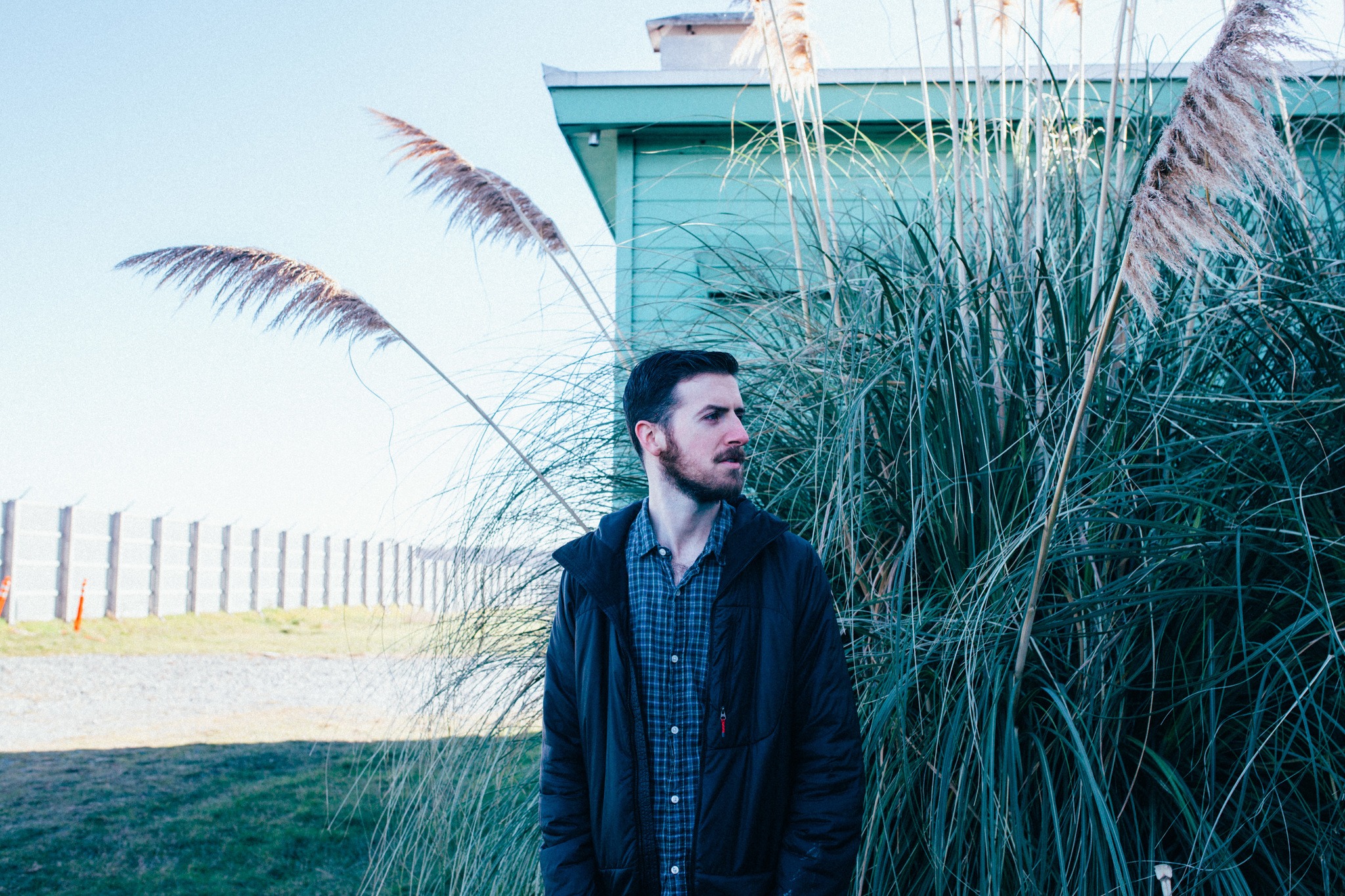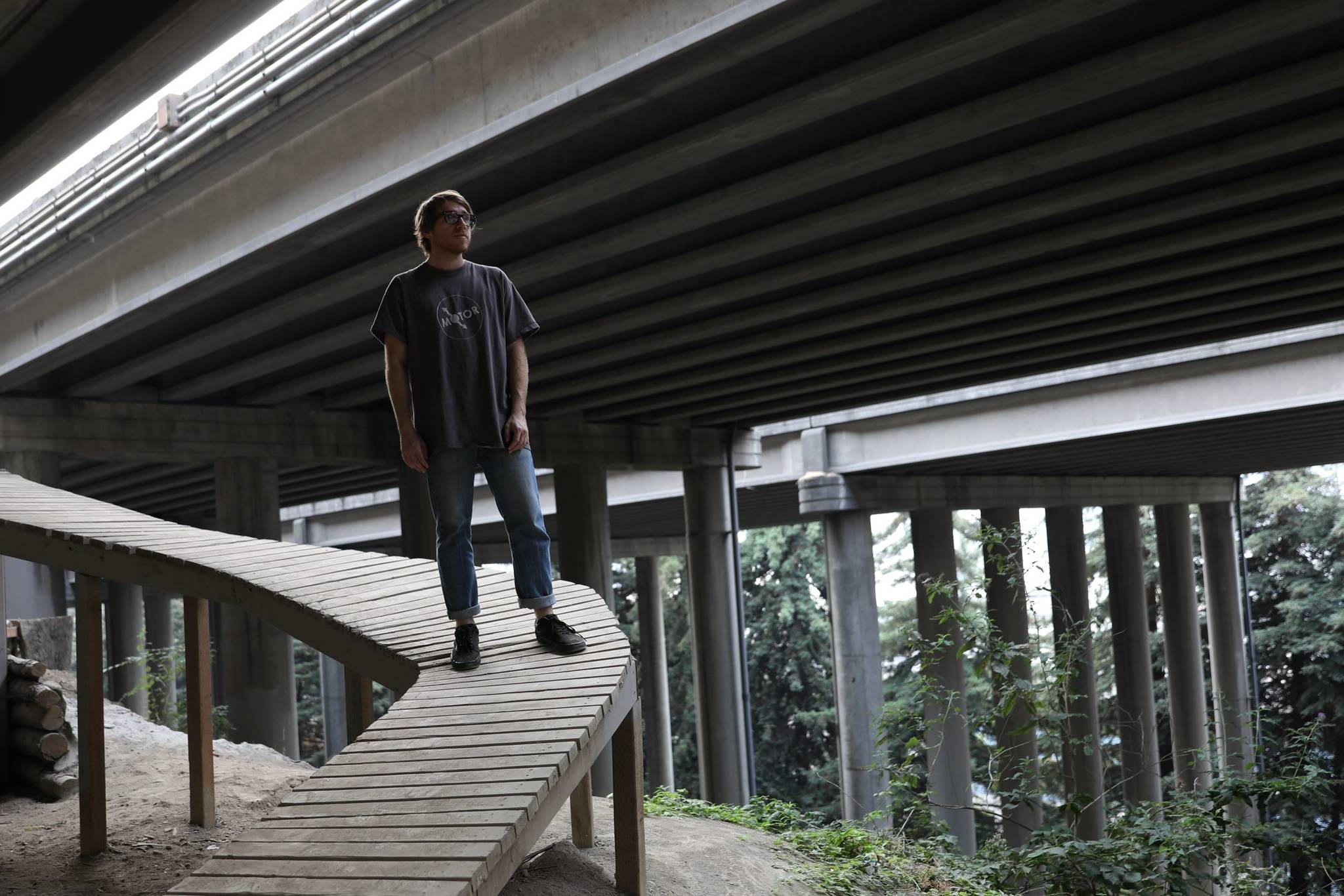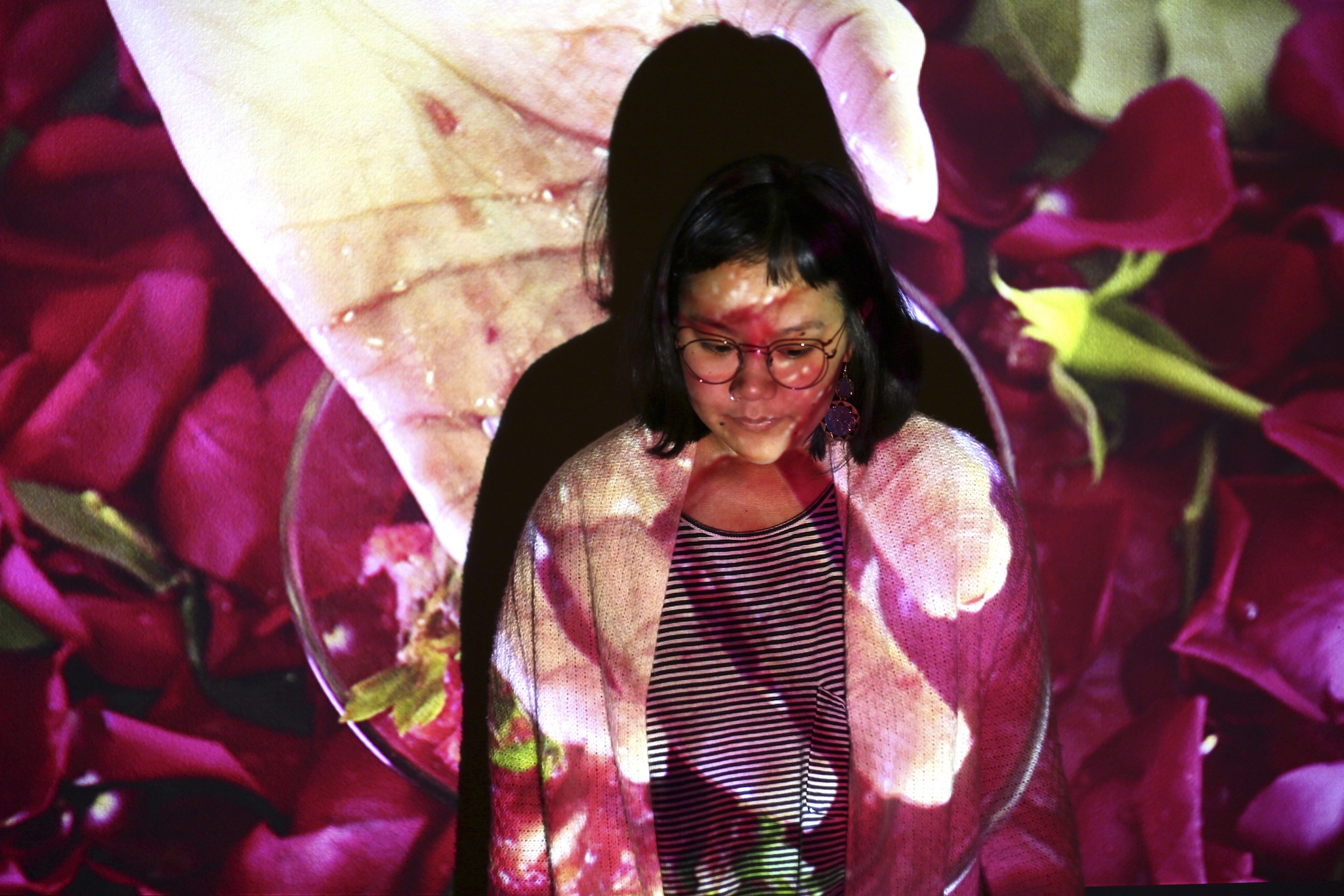Ambient music can feel left-field and unfamiliar. It often abandons the tropes people use to define music in the first place—beats, hooks, vocals, or even a time signature (though to make it more confusing, plenty of ambient artists use some or all of these elements). But there’s one way millions of people enjoy ambient music regularly: video-game soundtracks. For Seattle recording artist Jake Muir, who performs under the name Monadh, video games were the first thing to awaken his ear to ambient sound.
Muir debuted last September with his album Muara on Further Records, and he’ll perform a live set of field recordings at this year’s Corridor Festival, Seattle’s annual celebration of avant-garde audio and visuals. Muir is an exciting new talent on Seattle’s ambient scene, but his passion for unconventional music is decades old.
Muir says he didn’t grow up listening to much rhythmic music. He had a passing interest in “crappy rock songs” as a kid, but it was video games that first allowed him to connect deeply with sound. “I developed this love of video-game soundtracks, a lot of which is ambient but you wouldn’t necessarily call it such,” he says. “I think I started liking ambient music way back in my childhood, but didn’t know what the hell it was until I realized it existed outside the context of games.”
Sound design and music are a crucial aspect of any game; the soundtrack gives you emotional cues as well as strategic ones. The music lets you know whether you’re in danger, in love, or underground; if it’s nighttime, if you’re wounded, or if you’ve won. It’s ambient in the most literal sense, surrounding a player and existing as a peripheral aspect of the game’s imagined landscape.
Muir lists Final Fantasy X as one of his most cherished game soundtracks, which makes particular sense given his work today. FFX was the first game in the Final Fantasy series to use voice actors for character dialogue. Series composer Nobuo Uematsu has said that, previously, “it was up to the music to enhance the drama of a scene,” but in FFX, “the music, sound effects, and spoken dialogue are all balanced to tell the story to the player in the most effective way.” One could argue that FFX was the first truly ambient FF soundtrack by definition of devising music for the “background.”
Asked if his songs more invite active or passive listening, Muir quotes Brian Eno, saying he hopes to create music “as ignorable as it is interesting.” Muir seeks to strike the same balance as Uematsu—his music isn’t intended as the emotional centerpiece of any situation, but as an atmospheric element that collaborates with a moment rather than creates it.
Muir’s production typically combines two elements: looped, wildly distorted samples and field recordings. Much as in a video game, the listener experiences atmospheric, computer-generated “music” that’s punctuated by sound effects resembling the real world. Muara samples entirely from pastoral and romantic “library music,” stock music created for use in films, radio, or commercials that fits a generic mood. “They’re pretty corny records,” says Muir, “including the ones I used, but there’s always a moment of minor-keyed gold where it breaks from the general silliness of it. But it’s always something almost insignificant, like three to seven seconds.” Muir says he’d split this incredibly short sound clip into its separate frequency levels (essentially lows, mids, and highs) and loop and distort these copies, stretching and changing them until the original is practically obliterated.
One distortion technique Muir employs is granular synthesis, which involves cutting a short sample into even smaller clips called “grains” (which measure in the milliseconds), then rearranging and layering them to create entirely new timbres. Another trick comes from the Parisian electronic-music studio Groupe de Recherches Musicales, which created a software set that can stretch and muddle a clip into a drone of any length. “It’s a pretty efficient way of destroying audio,” Muir says. “You can smear a tiny sample into 60 seconds and it just turns into air.”
The basis of Muir’s sampling is, however, the loop. “I like how hypnotic loops can be,” he says. “It’s a mantra of sorts. There are these really cool inherent rhythms and ghost melodies that will form when samples get looped. It’s all about getting stuck in a moment.”
Muir says that despite the creative opportunities in sampling, it’s often criticized. “There’s a distaste for sample-based music,” he says. “People think it’s unoriginal or something… I think that’s total bullshit.
“My general artistic practice is indebted to hip-hop. The idea of sampling as far as hip-hop goes is taking the best part of something … You’re taking the sick parts, putting them together, and getting rid of the rest of the trash. So is it somehow worse or less than the original? I don’t think so. In fact, I’d argue it’s the other way around.”
It’s hard to see the similarity between Muir’s beatless ambient tracks and hip-hop, but he gives an excellent example: “Deadly Habitz,” by the East Coast hip-hop duo Gang Starr, which samples from Steve Gray’s “Beverly Hills,” another library-music track. “DJ Premier [of Gang Starr] pitched it up, rearranged it, and I think it’s pretty fair to say they improved upon the original,” he says.
Of course, not all Muir’s sounds are sampled. He’s also a prolific field recorder, which is essentially sampling from the world. “Field recording is a way to lend a sense of place to music,” he says, “something that isn’t synthetic that keeps things grounded.”
Most field recordings come from the natural world; some examples from Muir’s work include streams, waves, birdsong, glacial melt, dripping water, and steam vents. Muara drew upon samples from areas in the Pacific Northwest, like the Hoh Rainforest, but Muir samples sound wherever he goes; much of his current library comes from a recent trip to Iceland. His recordings also come from man-made sources: samples of generators, power plants, short-wave static, or a barbed-wire fence blowing in the wind. Some recordings combine both nature and industry—for instance, from a contact mic pressed to a metal pipe with water running through it.
It may seem straightforward, but there is art and subtlety to it. Muir says that at first his work was rough. Things like the aesthetic difference between a tape recorder and a digital recorder, or the fact that you often need a windscreen when recording outdoors, weren’t apparent to him.
“It’s more than just pointing a mic at something,” says Muir. “Consider a stream: Where you position the mic is going to make a difference. If you remove a pebble or two, it will change the integrity of the stream and the sound of it. Those aren’t things you’ll take into consideration when you’re a total novice, unless you’re some kind of genius, which I’m not.”
You can catch Muir’s set of field recordings at this year’s Corridor. Elevator, the group organizing the event, describes it as “the electric hum of a barn in winter,” a sound no one seems more qualified to capture than Muir. Corridor Festival, Georgetown Steam Plan, 6605 13th Ave. S. $30. Noon–11 p.m. Sat., Jan. 21.
music@seattleweekly.com








